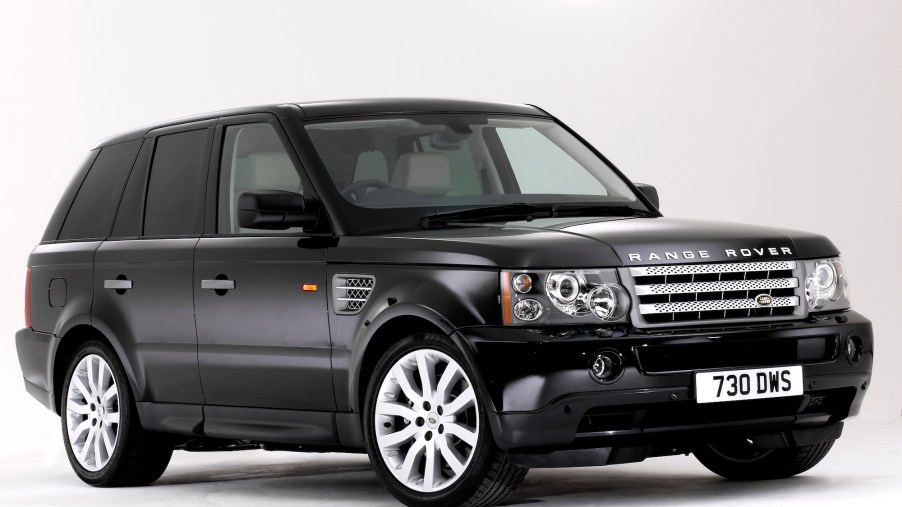
Is Your Car Windows’ Tinting Illegal?
Tinted windows are undeniably cool. We’ve all seen action movies and music videos filled with luxury vehicles whose darkened windows add enough panache to make us drool. But when it comes to car safety, dark window tinting isn’t always a good idea.
Even if a Lamborghini is out of your price range, you can legally tint your car’s windows — albeit with some restrictions. If your windows are already tinted but you’re unclear about the restrictions, here’s what you need to know.
Why drivers tint their car windows
First, you should know that many automakers manufacture cars with tinted windows. Darkened windows block UV radiation from the sun. By blocking radiation, tints protect the vehicle’s carpeting, upholstery, and dashboard from fading over time and shield drivers and passengers from cancer-causing UVA rays. However, drivers often want to darken their windows further or add cool finishing touches, such as colored or mirror tints. But all of those modifications are usually subject to state regulations.
Another reason for darkened windows: They reduce glare from sunlight in your vehicle, making it possible to drive more safely. And by reflecting sunlight away from your car, darkened windows cool your vehicle. This cooling benefit helps reduce the amount of A/C you use and helps your car get better fuel economy.
Tinted windows can also provide a measure of privacy and safety. A would-be thief might not be able to see valuables in your parked car. Further, darkened windows are more shatter-resistant than regular windows. The tint itself comes from a thin laminate that covers the window to darken or color it. When a window smashes, much of the glass adheres to the laminate. This reduces the number of glass shards spilling into the vehicle.
Window tinting restrictions
Window tints can be illegal if they’re too dark or if they cover too much area. Tinting is measured by VLT percent, or visible light transmission percentage. The VLT is the visible light that gets through the window, with a lower VLT percent meaning a darker tint. Each state sets its own VLT percent standards for a vehicle’s various windows and the use of colored and mirrored tints.
Tinting an entire windshield is illegal in every state except Ohio and North Dakota, AAA reports. In most other states, windshields may be tinted only up to the AS1 line. Most vehicles have “AS1” printed on the windshield approximately five inches below the top. State regulations usually allow you to darken a rectangular strip from the windshield’s top down to “AS1.” And most states require a VLT of 30 to 35 percent for the front side and all rear windows.
However, a few states’ regulations vary significantly from these ranges. For example, six states — California, Delaware, Iowa, New York, Pennsylvania, and Rhode Island — and the District of Columbia limit front-side window tinting to a VLT of 70 percent. Other states, such as Washington and Montana, allow drivers to use tints on their front side windows with VLTs as lows as 24 percent. And New Jersey, Vermont, and New Hampshire don’t allow after-market tinting at all.
Many state laws include exceptions for drivers with medical conditions (such as lupus) requiring limited light exposure. Arkansas and Michigan require those who qualify for such an exemption to carry proof in their vehicle at all times. Others, such as Massachusetts, require you to display an exemption sticker.
When your tints don’t comply with your state’s standards
Window tinting out of compliance with your state’s VLT, color, or other relevant standards is illegal and may result in a traffic stop. If a cop pulls you over and determines you’re out of compliance, you’ll likely get a citation and a fine. Then you should probably have the tints removed. Otherwise, police officers might stop you repeatedly and issue you multiple fines. Plus, a cop who pulls you over for illegally tinted windows might find your vehicle out of compliance in other ways, potentially resulting in additional fines.
But what if you drive your vehicle, with windows tinted per your state’s guidelines, to a neighboring state with stricter laws? As long as your windows comply with laws in the state where your vehicle is registered, you probably won’t get in trouble. But make sure before hitting the road. And before you get your windows tinted, know the rules in your state.


